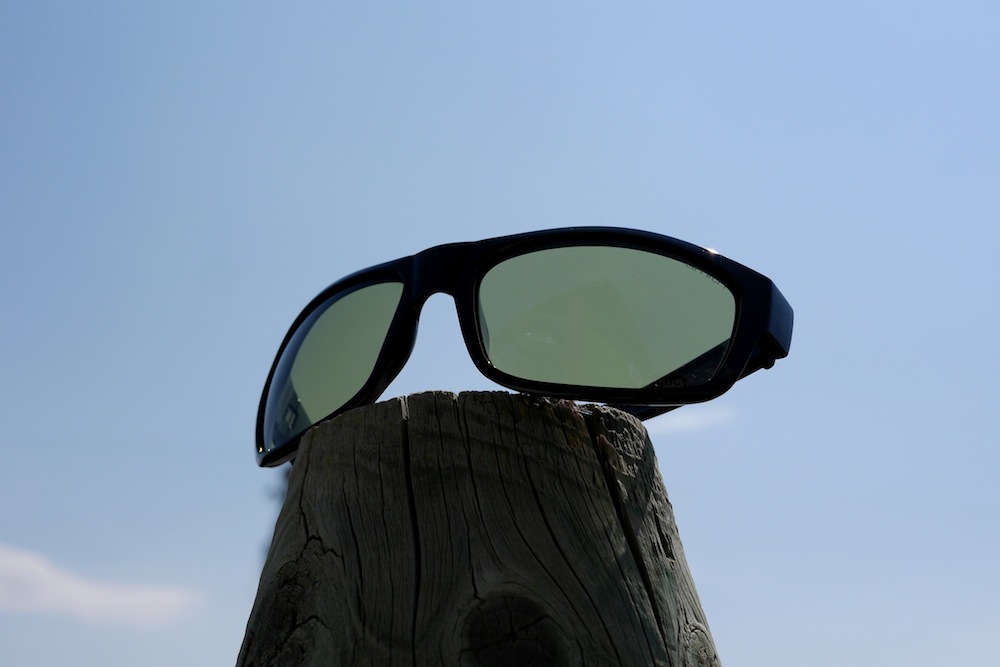Here’s an odd product that is very popular with guides and a few anglers at Headhunters. Low light sunglasses. Yes, low light shades. Kind of an oxymoron, but a very important piece of gear for those that fish dries in cloudy or early/late in the day conditions. Or ask expereinced saltwater anglers.
Over the past 25 years, I bet I have read 2 dozen “Guides Most Important Piece of Gear” articles. In every one, at least half the guides (all of the saltwater guides) state that an anglers most important piece of gear is hi or her polarized shades. The logic? If you can’t see the fish or your fly, you don’t need a fly rod.
We agree. If you spend your time fishing a river like the Missouri, you’ll find yourself continually getting more particular about the brand/technology, durability, fit, lens color and performance of your shades. At some point, you will decide that you need a pair of low-light shades for cloudy days, and those late evenings.
While we joke that the term “low-light shades” is an oxymoron, it does beg the question… “why do I need shades if the sun isn’t out?”
Two reasons. The first is safety. We wear sunglasses to protect our eyes from high speed flies. And we require our guided customers to as well. Just because the sun goes down, doesn’t mean we take off our glasses!
The second reason is to help us see. Contrast provided by high quality low-light lenses helps us make out our fly, indicator or that snout in tough “flat” or fading light. These lenses can actually create light as well, extending the evening bite a bit.
We have moved back and forth between two different low-light lenses over the years. The Smith Optics Techlite Polarchromic Amber has been a staple for years. The polarchromic feature never has seemed to lighten up enough for me on this lens, but I’ve always liked it in high overcast conditions during the middle of the day. It’s also been a favorite during the late fall and winter, when it never really gets that bright. Think BC Steelhead in late October.
Costa Del Mar has the Sunrise low-light lens, which has come and gone a few times lately. The current version is in Costa’s 580P (p=plastic). Many anglers prefer glass over plastic, though the Costa 580p lenses have proven very scratch resistant for us. The Costa is a great lens, but is a bit on the yellow side for me. It does “create” light very well, but the intense yellow color can tire your eyes quickly. Not perfect.
Both of the above lenses have been useful, but a little too dark for most angling situations that require a second pair of glasses.

Smith Low Light Ignitor
This year Smith is introducing the new Low Light Ignitor lens (center, above). Peter Crow from Smith Optics has been fishing the prototype lens for several years and raves about it. Like me, Peter is an ardent Steelhead fisherman, and wears this lens exclusively during fall and winter. I’m rolling a pair right now, and the lens tint is slightly lighter than previous low-light lenses that I have used. It allows 40% light transmission, double that of any other Smith polarized lens. These are perfect for those true “low-light” situations during late evening and winter monsoons.
While low light lenses are not on the top of most anglers “I need” lists, we bet that if you do a lot of early and late in the day fishing, or fish all winter long, you’ll appreciate them. Saltwater flats anglers also are huge fans of this lens color, especially if you hit those hazy back-country days for Tarpon or Snook. Smith’s new Low Light Ignitor is the perfect solution and tint, and come in a good assortment of frames. Check them out at the shop now. We also carry the Smith polarchromic amber and Costa sunrise lenses for you to compare.

I’ve also struggled with low light situations, but especially at dusk. I recently noticed Smith Optics started selling clear glass polarized lens:
http://www.smithoptics.com/uploads/products/products_273_58_213_enlarge.jpg
As soon as the sun sits behind the mountains, I reach for these!
Smith Low Light Ignitor looks great. Reminds me of the discontinued Hobie Sightmaster lens I used to love. Problem is this lens is not available in Rx. Any recommendation for a comparable Rx low light lens?
I would like a price for prescription low light smiths
Sunglasses
Hey Mark,
We don’t do those in house, but you can get some at your local eye doctor or Check out this site..https://www.sportrx.com/shopby/brand-smith/product_type-sunglasses.html